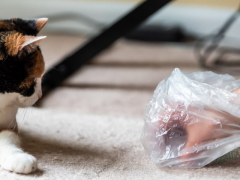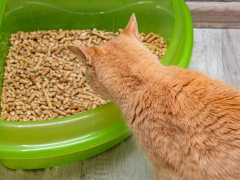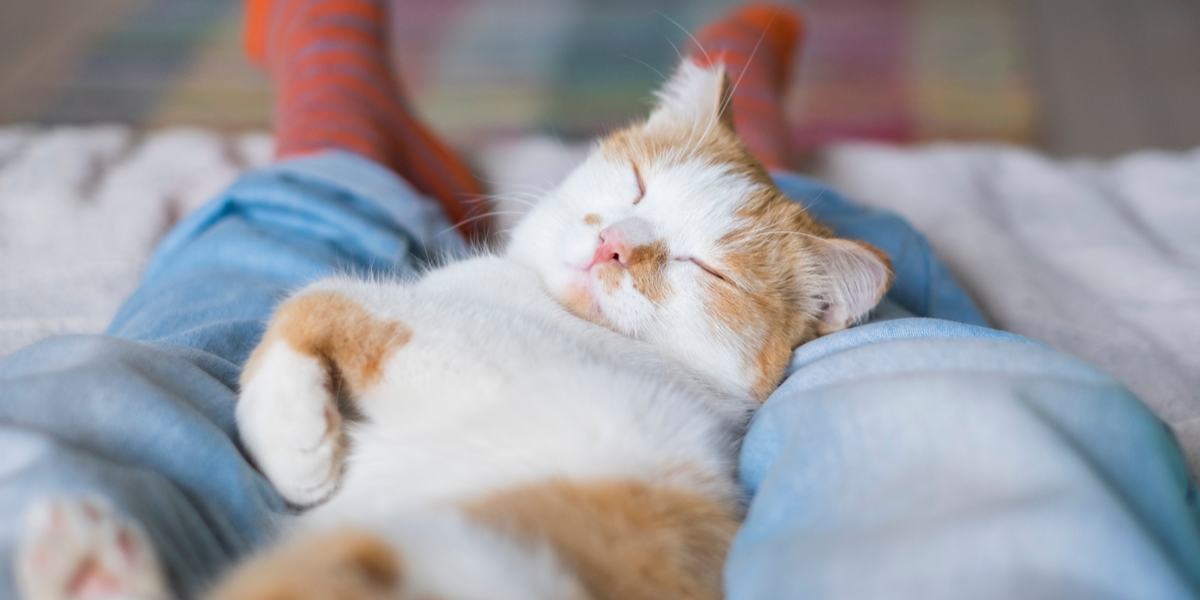
Cats have quite the reputation as being aloof, independent, and somewhat snooty … but that doesn’t quite fit with the cuddly felines who spend their nights tucked right up between our legs all night long.
Cat lovers know the joy of a cat snuggle, but you may have wondered why your cat sleeps in such a strange position every night. Is there any rhyme or reason to our pet cats’ snooze choices?
Well, turns out there is good reason for your feline friend to choose their owner’s legs as their favorite sleeping position, so read on to find out! We’ve listed the most common reasons for the domestic cat to choose this snuggly but awkward sleeping position, and what you can do about it if it’s not for you!
A Warm Place
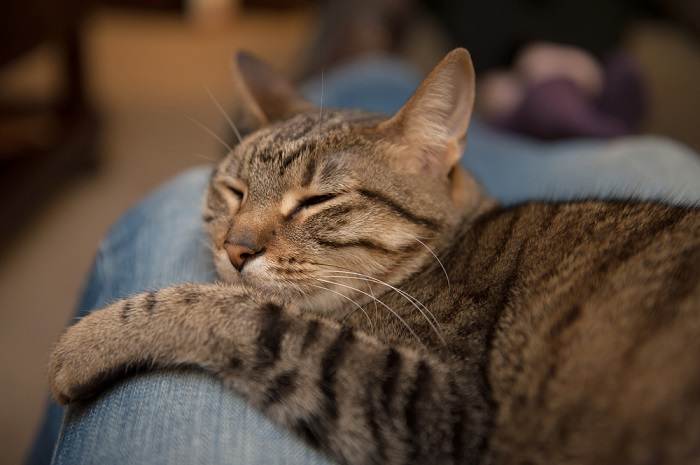
Cats know what they want, and they are happy to just go and get it, so this means they jump up and onto their owner’s legs when they need that warm spot for a sleep.
The domestic cats we know and love today as our pets originated in arid, desert areas. They are therefore drawn to warmth, especially when they sleep, as this causes a drop in body temperature.
You may have noticed that your cat’s preferred sleeping spot is often in a warm place: a sunny windowsill, in front of the fireplace, or in a cozy cat bed. It is normal cat behavior to seek out a lot of heat, and it so happens that the part of your body that generates the most heat is your legs because your cat is then surrounded on both sides by your body heat.
Also Read: Why Do Cats Sleep So Much?
Cats know what they want, and they are happy to just go and get it, so this means they jump up and onto their owner’s legs when they need that warm spot for a sleep. Other popular spots for warmth are your feet and the top of your legs.
Safe And Sound
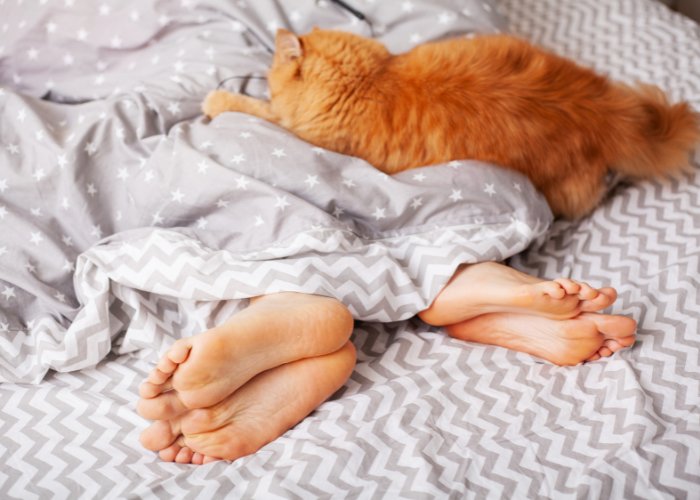
Choosing a sleeping spot up on their owner’s legs or your feet means they can feel secure and be able to observe their surrounding environment without having to move.
Domestic cats don’t have a natural predator, and as cat owners, we know to keep our cats safe. However, it is instinctive cat behavior to seek out a safe place to sleep, as while sleeping they are at their most vulnerable in the wild. So where do cats choose?
Well, if your cat likes to lay and sleep between your legs, you can congratulate yourself: you are their safest place! If your cat chooses to lie on their owner’s legs, at your feet, or in any other sleeping position that involves part of your body, you are providing them not only with a lovely snuggle but also with a sense of security.
Bonding And Affection
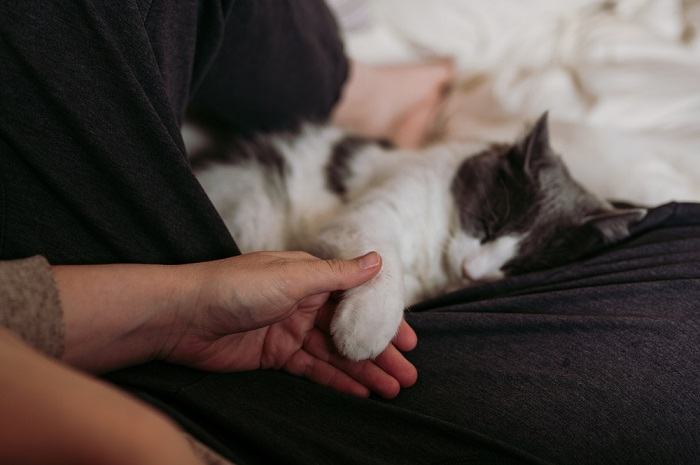
Cuddling up to sleep is your cat’s way of saying they love you and feel safe with you.
If you observe a group of bonded cats, you might see them sleeping all snuggled up together. This is called “pillowing” and is an important part of cat behavior. As cats sleep together, they transfer scent chemicals, called pheromones, which help them bond and show affection.
If your cat sleeps on you, they are showing their love and affection for you. Cats may even purr as they sleep when they feel very bonded and loving. Cats also transfer these “loving” pheromones to us when they rub their heads against us or twine between our legs.
Vantage Point
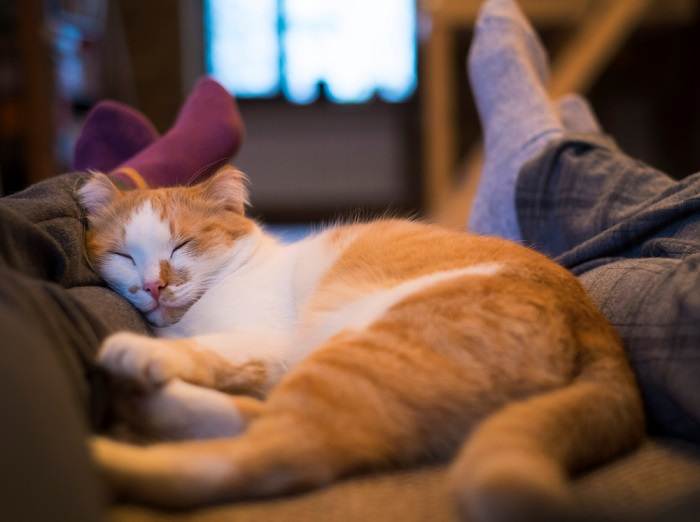
Cats are instinctively wired to sleep somewhere warm, somewhere up high, and with another cat or a person who is bonded to them and considered safe.
Cats naturally like to be up high, to stay out of danger, and to have a good view of the room. This is an instinctive behavior left over from being out in the wild, and vulnerable to predators. Choosing a sleeping spot up on their owner’s legs or your feet means they can feel secure and be able to observe their surrounding environment without having to move.
Achieving Deep Sleep
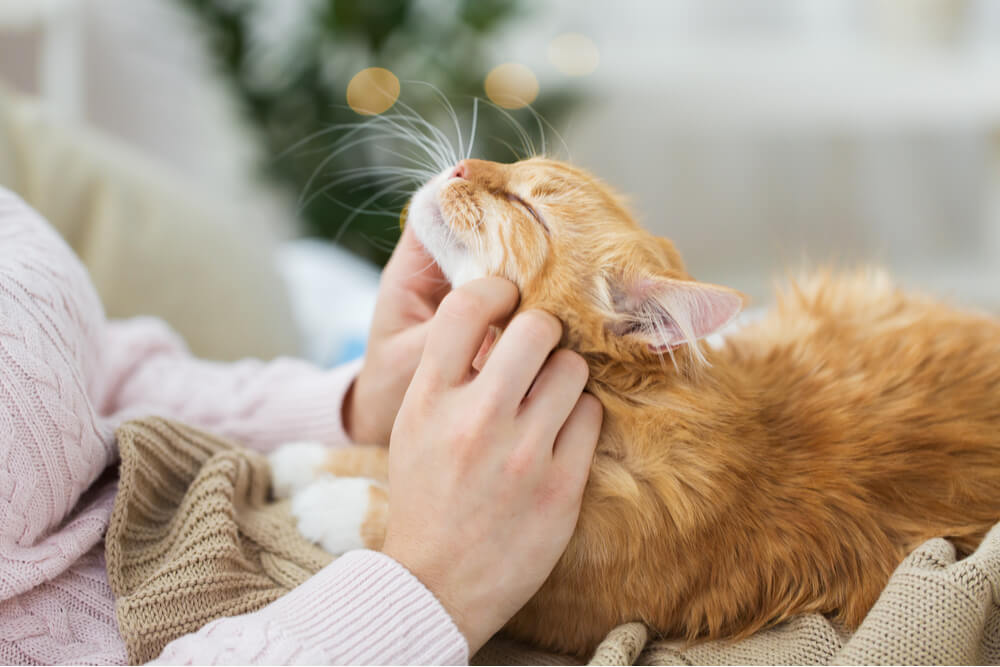
Cats need to feel safe and unconstrained. Allow your cat to give and receive affection on his or her own terms.
Cats love a little nap, a snooze in the sun, a doze in one of your discarded cardboard boxes— the term “catnap” is very apt!
But cats also need periods of deep sleep, where they can fully relax and their brains and bodies can rest and grow. In order to achieve this deep sleep, your cat must feel fully relaxed, safe, and comfortable.
Also Read: 8 Most Common Cat Sleeping Positions and What They Really Mean
For many pet cats, this may be on their owner in some form, or near to them, whether that’s at the foot of the bed or actually in contact with part of your body. Over time, if they sleep in the same place often, this will come to smell comforting and relaxing, and they will want to sleep on you more and more…
What If I Don’t Want My Cat To Sleep On My Legs?
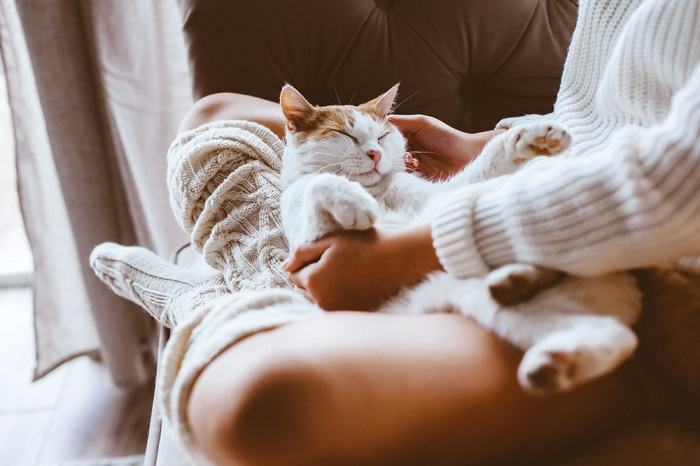
If you aren’t feeling up for cuddles, there are ways to encourage your cat to sleep elsewhere.
It may be that co-sleeping with a pet cat who wriggles, purrs, and meows at you is just not your thing! But all cat owners know that our feline friends can be pretty persistent when they want something, and sleeping in a safe and warm place is pretty high up there on the desirable list for most cats.
However, if you’re struggling to get some rest yourself with your cat using you as a pillow, here are some tips to gently encourage them elsewhere.
- Set up an alternative bed for them: Remember, cats don’t always like fancy; sometimes they prefer cardboard boxes! You may have to try a few different options to find something that your cat likes best.
- Make sure the cat bed is near you and placed up high rather than on the floor so they have a good view of the room.
- Line the bed with an article of clothing that smells like you, such as an old t-shirt.
- Use a heating pad to warm the cat bed before you go to bed. Make sure not to leave anything hot in the bed that your cat could burn itself on.
- Pheromone sprays can help make the bed smell more comforting and attractive to your cat.
- When your cat joins you in bed, gently transfer them over to their own bed. Be persistent and consistent, this may take some repeating until they understand!
Conclusion
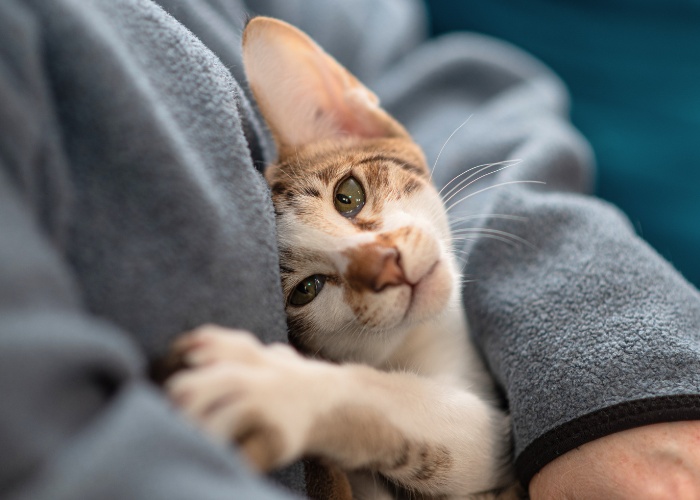
If your cat spends significant time with you, they know what your heart usually sounds like.
Whatever their aloof reputation may say, cats do love a cuddle. Cats are instinctively wired to sleep somewhere warm, somewhere up high, and with another cat or a person who is bonded to them and considered safe.
Your cat choosing you as their sleeping place is a great compliment. However, if you don’t wish to share your sleeping space with a fluffy friend, then there are some gentle and respectful ways to switch them to a suitable alternative.
